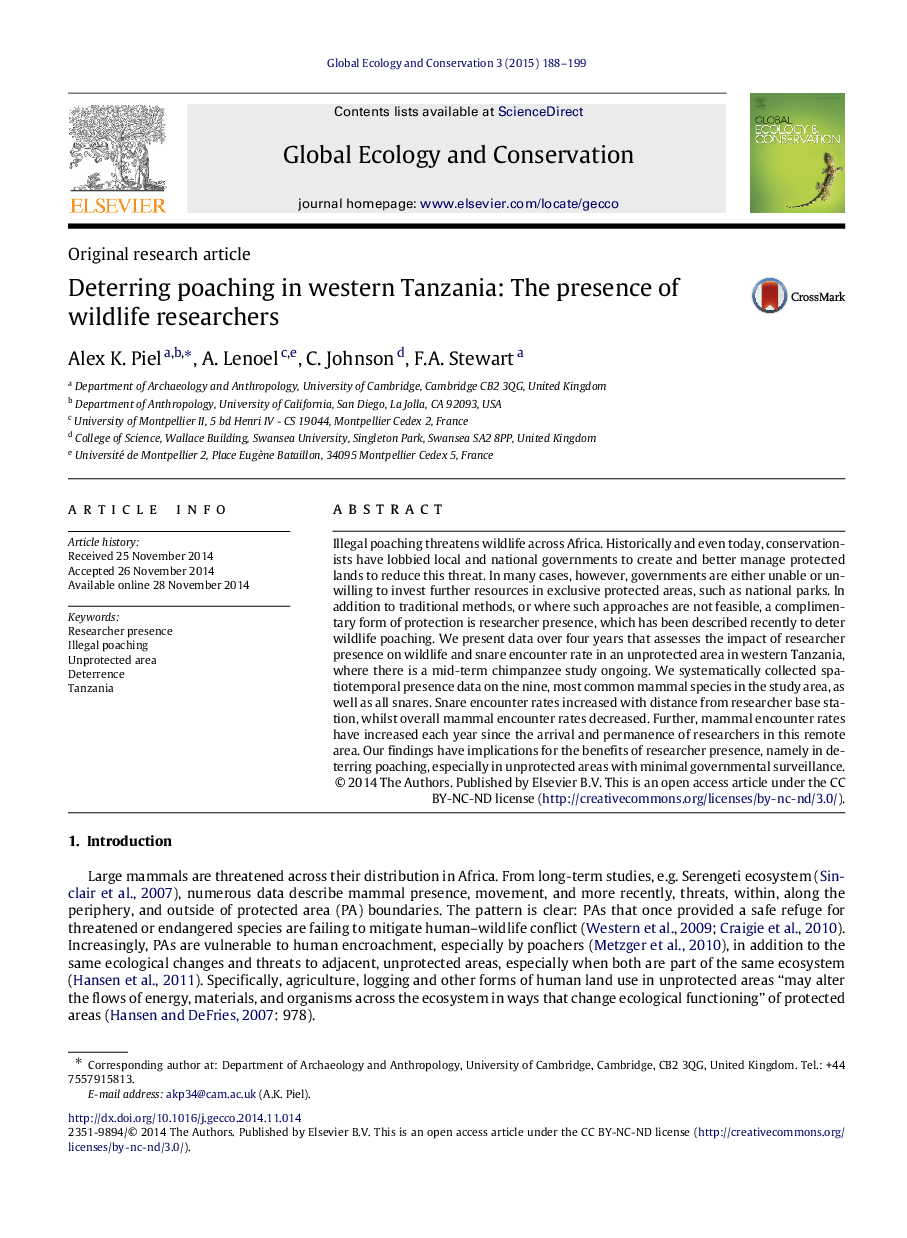| Article ID | Journal | Published Year | Pages | File Type |
|---|---|---|---|---|
| 4379565 | Global Ecology and Conservation | 2015 | 12 Pages |
Illegal poaching threatens wildlife across Africa. Historically and even today, conservationists have lobbied local and national governments to create and better manage protected lands to reduce this threat. In many cases, however, governments are either unable or unwilling to invest further resources in exclusive protected areas, such as national parks. In addition to traditional methods, or where such approaches are not feasible, a complimentary form of protection is researcher presence, which has been described recently to deter wildlife poaching. We present data over four years that assesses the impact of researcher presence on wildlife and snare encounter rate in an unprotected area in western Tanzania, where there is a mid-term chimpanzee study ongoing. We systematically collected spatiotemporal presence data on the nine, most common mammal species in the study area, as well as all snares. Snare encounter rates increased with distance from researcher base station, whilst overall mammal encounter rates decreased. Further, mammal encounter rates have increased each year since the arrival and permanence of researchers in this remote area. Our findings have implications for the benefits of researcher presence, namely in deterring poaching, especially in unprotected areas with minimal governmental surveillance.
